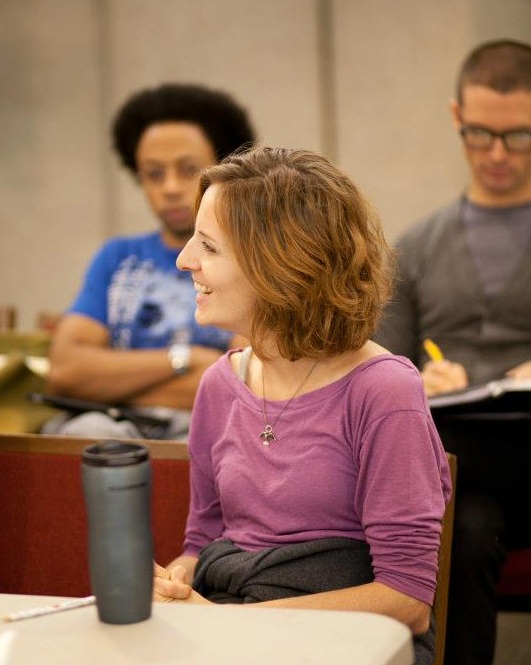What The Fairy Tale Princess Can Teach Your Daughter, If You Let Her
(This article was originally published on PolicyMic.)
Has anyone noticed the recent conspiracy to force the fairy tale universe into our own? From SNL’s recent sketch The Real Housewives of Disney that depicted Cinderella as a "big f***ing mess," to photographer Dina Goldstein’s Fallen Princesses series that challenges fairy tale princesses with the struggles of the modern woman, we can't get enough of this problemantic version of the leading lady. Broadway recently brought Cinderella back to the Great White Way in Rodgers and Hammerstein’s Cinderella, and Disney has its own plans for the come-back girl, with a new Kenneth Branagh Cinderella film slated for 2014.
So what's a feminist parent with a princess-obsessed four-year-old to do?
Here’s the good news about fairy tales — they aren’t love stories. At least, not in the chick-flick-rom-com sense. They're also not about gender — at least not in the XX/XY chromosome sense. Fairy tales are about the human experience, through a "feminine" lens. And their lessons are crucial to all of us.
Most fairy tale princesses — including Cinderella, Rapunzel, Snow White, Belle, and Sleeping Beauty — emerged from the oral storytelling tradition in ancient Europe. The Grimm Brothers granted the princesses eternal life by publishing their stories, but before the Brothers Grimm, these ladies’ lives were in the hands of common mothers, sisters, aunts, and grandmothers: the people who took care of children. It’s almost as true today as it was back then (for better and worse): children live in a world run by women, while the adult world is predominantly masculine.
Fairy tales weren’t only told to girls in ancient times; they were teaching tools for boys, too. Cinderellawasn’t originally about the "uncool" girl dreaming of meeting a handsome prince; Cinderella was about how kindness, goodness, and patience never, ultimately, go unrewarded.
But what do we do about the problematic prince who always shows up at the last minute, insisting on executing a rescue? It’s true that Cinderella is rescued by Prince Charming in the original text, but their story is not so romantic. They meet at a ball. He finds her beautiful. They dance and share momentary bliss and happiness. Then, the clock strikes 12 and she disappears, losing her slipper in the process. The prince wants her for his wife, so he sends a footman to find her. The footman does, and Cinderella and Prince Charming live happily ever after. This prince is a distant figure. He doesn’t even have a name. All we know is that he found Cinderella beautiful. Some feminists hate that. But ancient beauty was different than the beauty we know now. Cinderella didn’t wear makeup, didn’t go to the gym, and she certainly didn’t get a boob job. Beauty wasn’t Cinderella’s currency for getting a prince.
Nature made her beautiful, the thinking goes, because she was kind.
Fairy Tales choose feminine heroes because fairy tale heroes get their strength from the natural world, not from human hierarchy. Their heroes are powerless because children are powerless. They are physically weak because children are weak. But fairy tale princesses are strong in spirit and integrity, and nature acknowledges this where men don’t. Nature helps these heroes along — until the prince comes. But the prince isn’t really a man. He’s not Angelina’s Brad or Beyonce’s Jay-Z; the prince is the divine. The prince is God. The moral of the fairy tale story? It doesn’t matter if you’re a boy or a girl, gay, bi, or straight — when it seems that no one loves you and that you are powerless against injustice, know that there is a divine prince who loves your inner beauty and, if you persist in goodness, someday you and your prince will live happily ever after.
Peggy Orenstein, author of the 2011 New York Times best seller Cinderella Ate My Daughter, might argue that the original meaning of these stories is completely lost on today’s children because the "pink and pretty" princess image has forever destroyed the Cinderella of old. But the fairy tale’s power comes not from great CGI or sparkly costumes; it comes from the imagination, which is still shaped by the people who enter the child’s imagination with them. More often than not, those people are still women. So, maybe, fairy tale princesses can still be good, kind, and brave, not for a man, but for all humans.
Maybe it’s not actually necessary to throw the princess out with the breast implant saline water.
